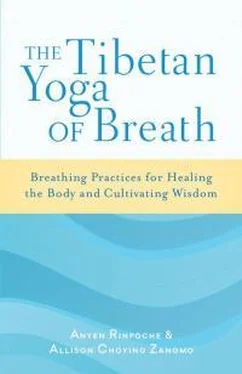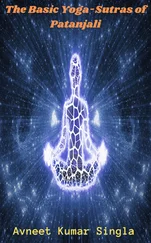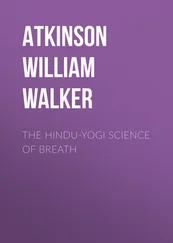Classical Eastern and Western philosophy both tell us that the elements are the building blocks of life. But what does it mean to say “breath is life”?
Etymology and the history of language itself show us that breath has always been linked to life. In the linguistic roots of Latin and Greek, the names given to the soul or the spirit are directly connected to or synonymous with the breath. The Latin words animus (spirit) and anima (soul) are the same as the Greek anemos, meaning “wind.” Another Greek word for wind, pneuma, also means “spirit.” Our ancient ancestors often associated breath with the soul, since breath takes on a misty, ghostly shape in cold weather. 1
Historically breath is what gives us our soul or spirit, but we also know that breath quite literally sustains life. The strength and vitality of the body is maintained through the balance of oxygen and carbon dioxide at a cellular level. In fact, as we will demonstrate, Western medical research shows that our overall health is directly related to how we breathe. 2
HOW WE BREATHE
Breath is physiological, psychological, a conditioned behavior, and a voluntary action; it is a dynamic, multifaceted, vital function of the body. Physiologically, breathing occurs automatically based upon the metabolic demands of the body. The word metabolic is used to describe a biochemical process in the body—the buildup of some substances and the breakdown of others. On a cellular level, breathing brings about the exchange of oxygen and carbon dioxide that has built up in the blood. For example, when we are running at full tilt or when we have a high fever, our body needs more oxygen pumped quickly throughout our body. Our heart rate and our breathing rate are linked for this reason; they both speed up and slow down at the same time—and this all occurs behind the scenes without any conscious effort on our part. We feel the effects of this without needing to understand the science or anatomy behind it, let alone have a medical degree.
Breathing is also influenced by our psychological condition: our perceptions and emotions. We each have a particular emotional temperament, which may be influenced by genetics, our family environment, and our life experiences. Because of these variables, our breathing rate, depth, and quality change in reaction to emotions: when we think about something in the past that upsets us, or anticipate something exciting in the future, or experience a challenging situation in the moment.
Breathing is also a conditioned behavior, a habitual response. Over time, repeated reactions to inner and outer conditions become ingrained tendencies, like any practice or habit. We unconsciously associate breathing patterns with stimuli, and therefore breathing patterns are reinforced and generalized. The more often certain emotions are associated with certain experiences, the more breathing will shift and settle into a pattern, which may not always be healthy. For example, you may have a coworker who is difficult to work with and says unkind things that are upsetting. After repeatedly experiencing this, you may feel anxious, your respiratory rate may increase, and you may carry extra tension in your shoulders while at work. Perhaps this coworker leaves for another job, so the direct stimuli are no longer there to agitate you. However, the body’s pattern of increased breathing rate with tension in the upper back and shoulders may continue—the behavior has become automatic and generalized to being at work, rather than being around that coworker. In other words, our bodies can confuse conditioned response with natural function.
The voluntary control of breathing is an important and unique characteristic of the body. What other visceral functions are we able to directly control? None! We can learn to influence other visceral functions such as our heart rate or our blood pressure, but we are not able to directly control them. We can hold our breath, or breathe faster, or breathe slower, at any time, by choice. Why does this control matter? It matters because breathing is the link between our inner and outer experiences—we take air from the outside world into the body with every inhalation. It is also the link between the physical and emotional reactions we have to those experiences. In other words, what is happening within our bodies and minds is channeled through our breathing. But the flip side of this statement is that the way we breathe can also change what is happening within our bodies and minds.
We can think of the control of our breathing as existing along a continuum, from being entirely controlled by the body (unconscious) to being entirely controlled by the mind (conscious). On one end is the physiological/automatic aspect of the breath, determined solely by the physiological requirements of the body. Moving along the continuum, we find the conditioned/behavioral; this is where our body confuses conditioned behavior based on emotions and perceptions with natural function. Physiological function is altered through repeated behavior and experiences of the mind. Conscious behaviors have transformed into unconscious physiological reactions. Next, we arrive at the psychological/perceptual/emotional qualities of the breath: how we breathe in response to our emotions and perceptions based on what is happening in the mind at that moment. The interaction of thoughts in the mind produces an accompanying physiological response. And on the far end of the continuum, we find the voluntary aspect of the breath, where the breath is directly controlled by our mind. This continuum shows that breathing is the dynamic link between the mind and the body. It spans our physical needs as well as our emotional reactions: it represents our whole experience in the body.
Research shows that our behavioral breathing patterns are so pervasive and habitual that even during REM sleep, when the body is resting the most deeply, voluntary breathing patterns can still control how we breathe. 3Again, our bodies confuse conditioned response with natural function. Breathing is distinct from other bodily functions because it is something we can directly control through awareness and training. Unlike our heart rate and other core mechanisms, which we can only influence indirectly, each of us has the power to change the way we breathe.
Two Types of Voluntary Breathing
Western medicine recognizes two types of breathing patterns. These two types of breathing patterns correlate with the area of the body where the breathing occurs, and are called thoracic and abdominal breathing. Thoracic refers to the thorax, an area of the chest encased by the ribs. Abdominal refers to the area below the diaphragm, or around the navel. Learning the differences between the two types of breathing makes it easy to understand the basic philosophy and techniques presented in this book.
When we are at rest, abdominal breathing is generally considered the healthiest pattern. Abdominal breathing primarily relies upon the contraction and relaxation of the muscle beneath the lungs called the diaphragm . The diaphragm pulls air into the lower part of the lungs. However, when our bodies need more oxygen, such as during strenuous exercise, our body may involuntarily supplement abdominal breathing with thoracic breathing. In thoracic breathing, air is pulled into the upper part of the lungs.
As the name suggests, thoracic breathing comes from the accessory breathing muscles in the upper chest and rib cage rather than the diaphragm. Thoracic breathing is shallower and faster than abdominal breathing, and often includes active or forced exhalation. The passive relaxation of the diaphragm is accompanied by active contraction of additional muscles that forces the air out of the lungs, rather than simply allowing the diaphragm to relax, as during abdominal breathing. In other words, in thoracic breathing, we are contracting muscles to exhale, rather than just allowing a contracted muscle to relax.
Читать дальше












